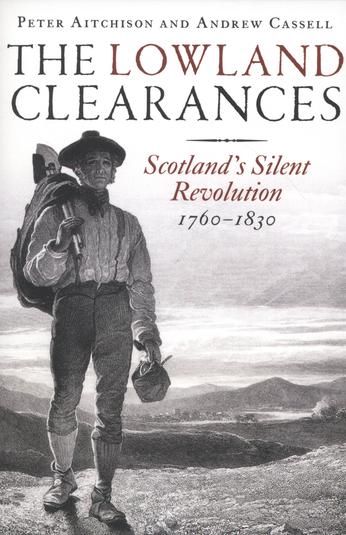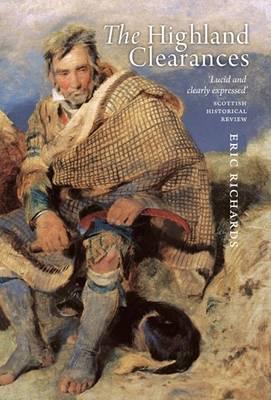 Please buy the Lowland Clearances and
Please buy the Lowland Clearances and  The Highland Clearances.
The Highland Clearances.
“The toil-worn cottar frae his labour goes” (Robert Burns)
“The poor man says, Where shall we go? The rich man says “Go to Hell”
The Highland Clearances are part of the folk-memory of all Scots – but this book shows that it was preceded by a process which began in the Scottish Lowlands nearly a century before the Highland glens and straths were emptied of people in the 1820’s and 30’s. Tens of thousands of Lowlanders were moved from the land by estate owners who replaced them with livestock or enclosed fields of crops. This revolution of “improvement” helped shape the landscape we accept today as the Scottish countryside.
But it also swept aside a traditional way of life, causing immense upheaval and trauma for rural dwellers, many of whom moved to the new towns and cities or emigrated. In the late 18th-century, the simple act of losing land and becoming landless was much more significant for large numbers of people in Lowland society than it was for those in the Gaelic-speaking Highlands of Scotland, although the Highland Clearances happened faster and were more dramatic. The population of Scotland in 1755 was only 1,265,380 – yet 2 million Scots emigrated between 1800 and 1910. The Lowland Clearances set in train the trend of depopulation which continues to affect Scotland to this day; the number of people who left the Lowlands during the agricultural revolution far exceeded the number exiled from the Highlands. And yet, compared to the Highlands, very little has been written or published about the Lowland Clearances. This book, based on the BBC documentary series aims to redress that imbalance. It does not deny the clearances in the Highlands and Islands but reflects pioneering historical research which establishes them as part of a wider process of clearance which affected the whole of Scotland. Chapter 3, which deals with the Galloway Levellers, is a must-read – Galloway was one of the first regions of Scotland to be exposed to the full rigours of the free market, with remarkable echoes of the 20th and 21st centuries – and raises a current question – why are we so resistant to radical revolution in Scotland? It is a tale of “improvement” certainly, but also of greed and injustice, cruelty and exploitation, which must never be forgotten.
“This book has much to commend it as a contribution to one of the more important aspects of Scotland’s history, especially because it is an area too readily neglected in the popular imagination” (Graeme Morton, Scottish Affairs)
The Highland Clearances stands out as one of the most emotive chapters in the history of Scotland. This book traces the origins of the Clearances from the eighteenth century to their culmination in the crofting legislation of the 1880s. In considering both the terrible suffering of the Highland people as well as the stark choices that faced landowners during a period of rapid economic change, it shows how the Clearances were part of a wider European movement of rural depopulation. In drawing attention away from the mythology to the hard facts of what actually happened, The Highland Clearances offers a balanced analysis of events which created a terrible scar on the Highland and Gaelic imagination.
“Required reading … not to be missed for its fearless and comprehensive grasp of the past and its relevance for today” (Ileach: The Independent Newspaper for Islay and Jura)
Yes Edinburgh West has a website, Facebook, Twitter, National Yes Registry and a Library of topics on Scottish Politics, including Land Reform.
